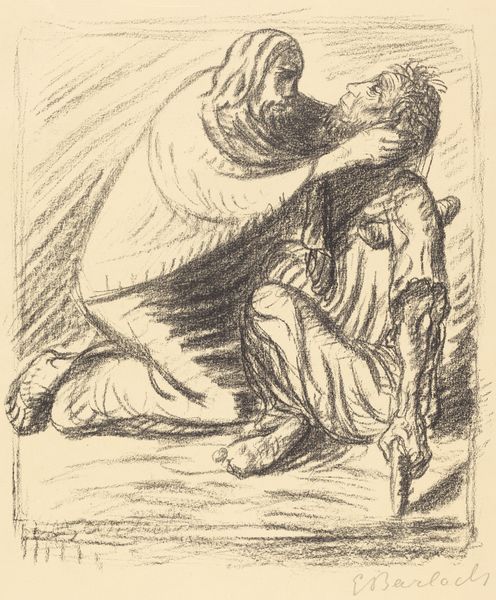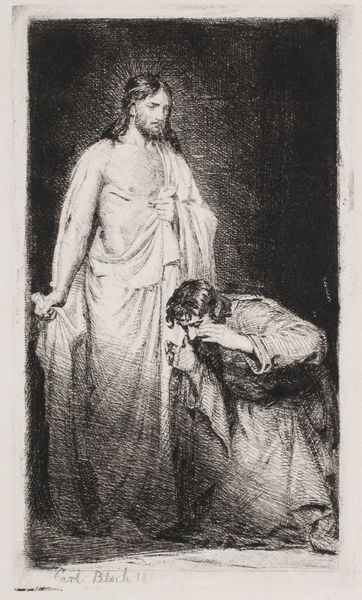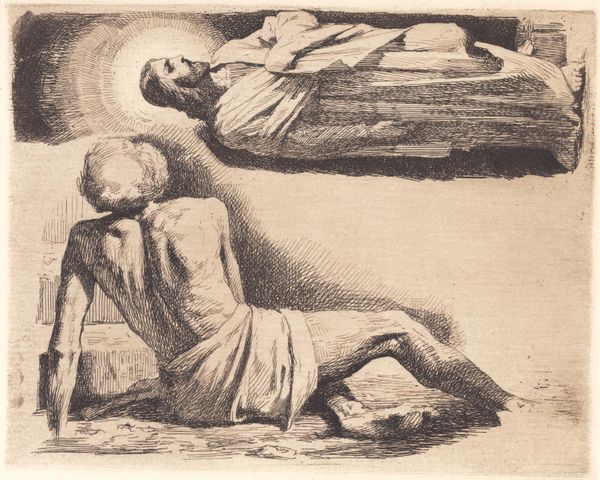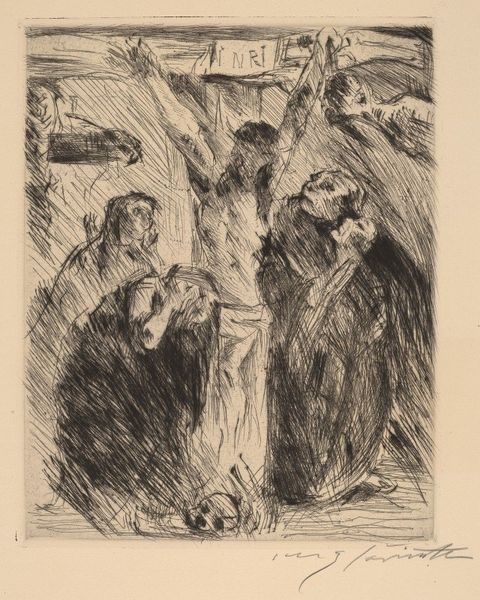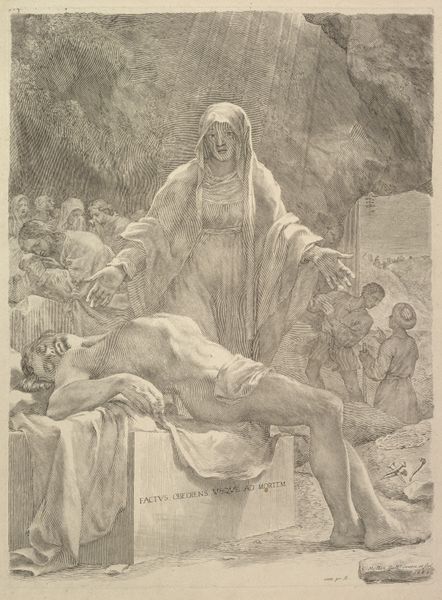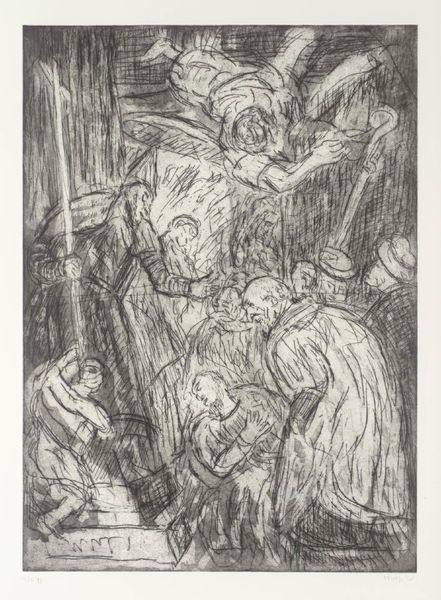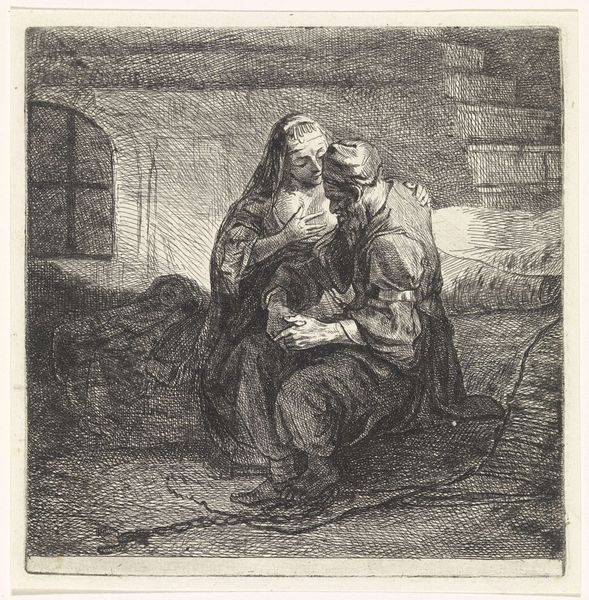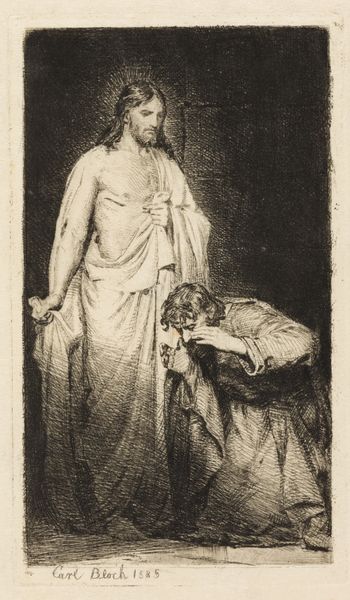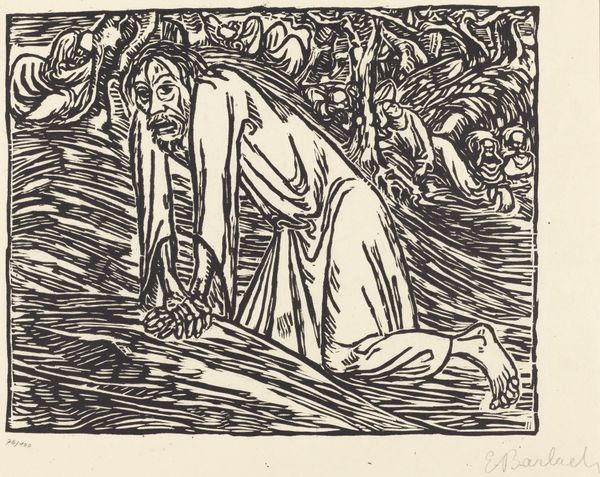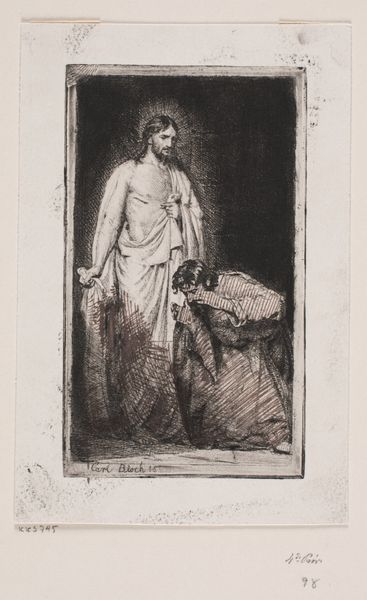
drawing, print, ink
#
drawing
#
ink drawing
#
narrative-art
# print
#
pen illustration
#
pen sketch
#
pencil sketch
#
figuration
#
ink line art
#
linework heavy
#
ink
#
ink drawing experimentation
#
pen-ink sketch
#
expressionism
#
thin linework
#
line
#
pen work
#
history-painting
Copyright: National Gallery of Art: CC0 1.0
Curator: Looking at this pen and ink drawing, created in 1916 by Ernst Barlach, titled "Anno Domini MCMXVI Post Christum Natum," what immediately strikes you? Editor: The overwhelming feeling is one of profound grief. The two figures seem burdened, almost collapsing under the weight of... something immense. Curator: The context is vital here. 1916. World War I. Barlach, though initially supportive of the war, was deeply affected by its horrors. His work increasingly reflected anti-war sentiments. This piece offers a direct indictment. Editor: The graveyard stretching into the background is harrowing. A field of crosses as far as the eye can see. The two figures, presumably mourning, seem almost swallowed by the scale of the devastation. Are these supposed to be specific historical or biblical characters? Curator: That is where it gets even more complex, particularly as we consider its social context. This isn't a glorification of war, of masculine strength and valor. These men, these figures, they appear to be broken. Powerless. Vulnerable. Consider also, post-war Germany. Economically and emotionally devastated, the trauma passed through generations. Editor: So, it becomes a broader comment, a visual representation of a society grappling with unimaginable loss and questioning the very foundations upon which it was built? The stark lines, the almost frantic energy in the pen strokes… it amplifies the emotional intensity. The politics of the imagery certainly speak to the anti-war movement gaining momentum. Curator: And we can examine the institutions supporting art during the Weimar Republic, the changing role of the artist within a fractured society seeking answers. This is about the loss of faith – faith in progress, in nation, in God, perhaps. How do you feel contemporary audiences respond to this? Does it still resonate? Editor: Sadly, yes. War never ends, and Barlach’s raw expression of grief, the acknowledgment of utter devastation, it finds echoes in every conflict, in every loss we witness today. A devastating image with implications that extend far beyond its creation. Curator: Indeed, the pain it so vividly renders is timeless, as is the search for accountability. Thank you for sharing your interpretation.
Comments
No comments
Be the first to comment and join the conversation on the ultimate creative platform.
